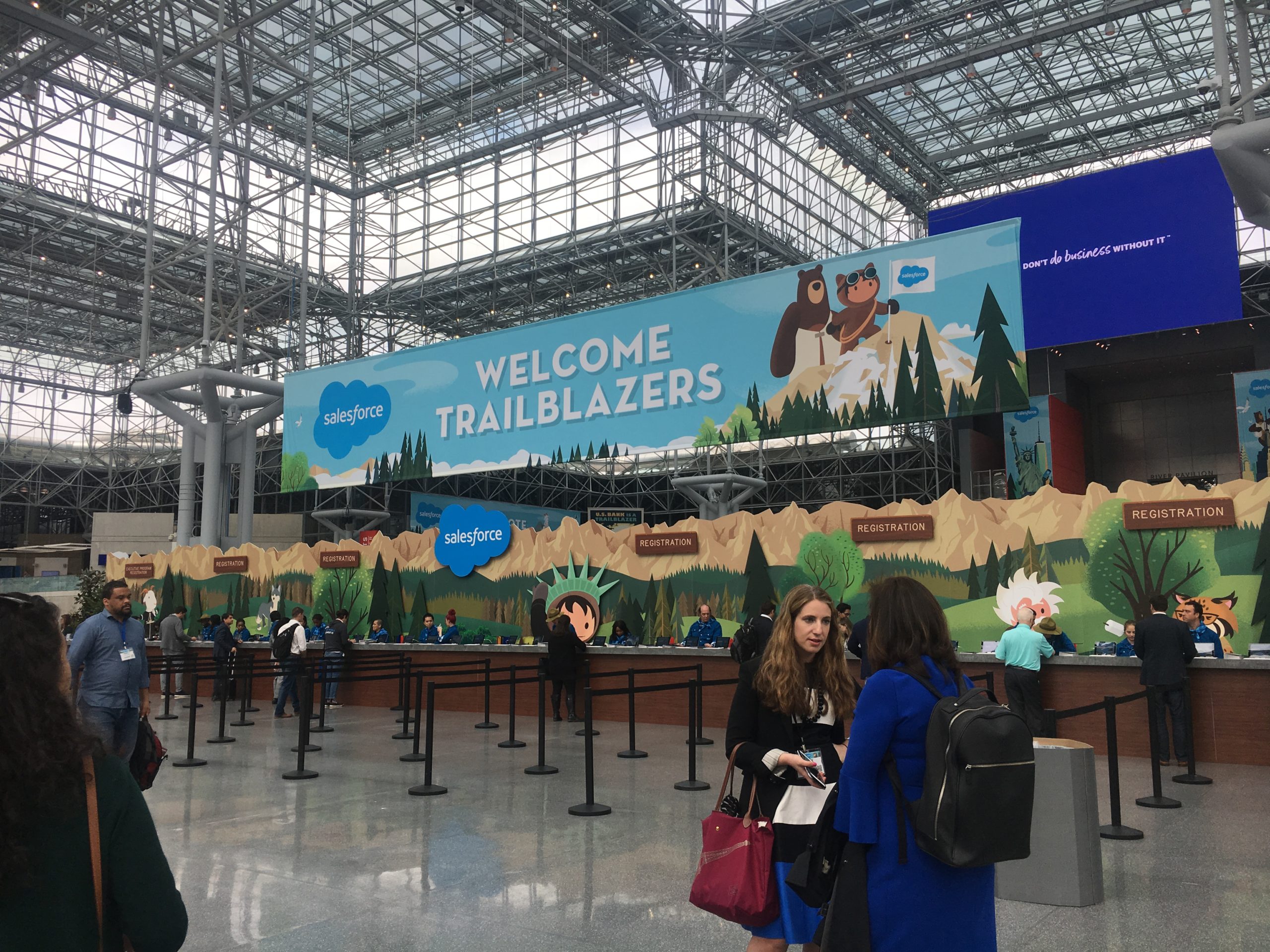Our team of five enters the Javits Center on a Tuesday morning. We’re instantly surrounded by Salesforce customers, partners, and professionals from all over the country. We have one thing in common: we’re dying to know the latest features and strategy tips from the industry leader.
We attended several presentations throughout the day. Here’s what we learned from the top four:
Session #1 – Salesforce CPQ & Billing
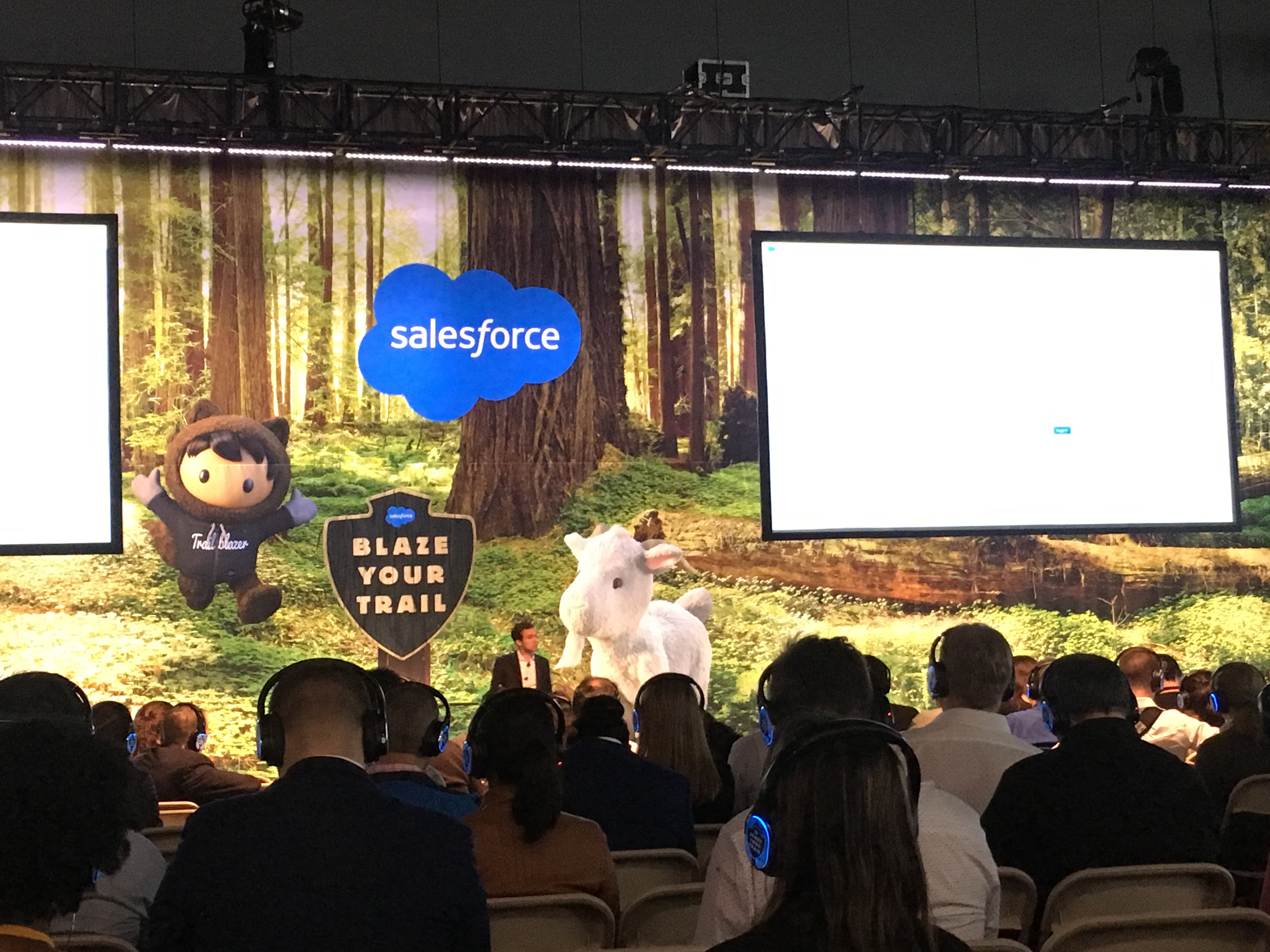
Salesforce is rolling out an updated CPQ and Billing program that gives salespeople the opportunity to create a more personalized quoting and billing experience. All quotes, billing documents, and payments can be created, sent, and managed in Salesforce (with applicable integrations).
Salesforce will also create a quote based on your client’s budget. The tool will auto-populate the quote based on client needs within budget parameters, and will let you know if you’ll need buy-in from upper-level executives. Pretty cool!
Account managers can see quotes and contracts under the Accounts tab, track the client’s usage consumption, and update contracts accordingly.
On top of that, the new Einstein Pricing Guidance allows you to take Salesforce data (within CPQ) and graph a demand curve of which products are performing well. The program also gives real-time sales suggestions for reps!
To learn more about Salesforce CPQ and Billing, click here.
Session #2 – The Battle for B2B and B2C Relationships
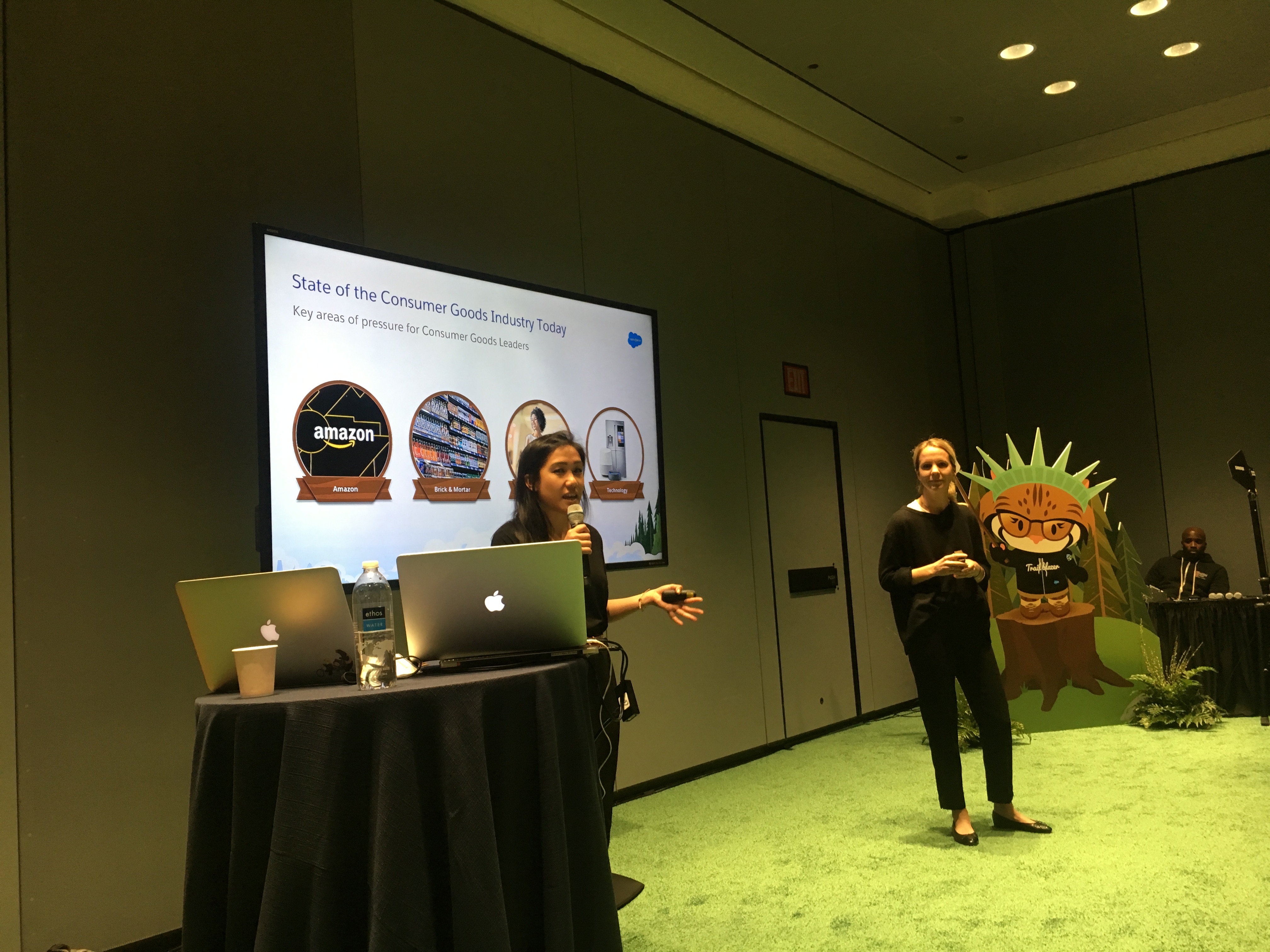
The next session covered how online marketplaces, AI, and robotics have changed the way we buy products. Two Salesforce higher-ups gave us a breakdown of how the product marketing landscape is changing, based on their research of top executives from all over the world.
Some key findings included:
- 68% of companies agree that consumers are more loyal to Amazon than individual brands
- 50% of consumers make a first-time purchase from a retailer and 31% make a purchase from a marketplace (like Amazon). For the second purchase, these numbers are reversed.
- 76% of Consumer Goods leaders are optimistic about the future of retail in supermarkets/superstores, as opposed to convenience, department, and drug stores.
- Technologies shaping the way we buy goods are:
- AI
- Voice assistant
- Blockchain
Although not directly related to Salesforce or Pardot marketing, this session gave us great insight on where the consumer products industry is going, and how brands should focus on their D2C strategies (something that can be achieved through our brand stage!)
Session #3 – Growing Client Relationships in Pardot
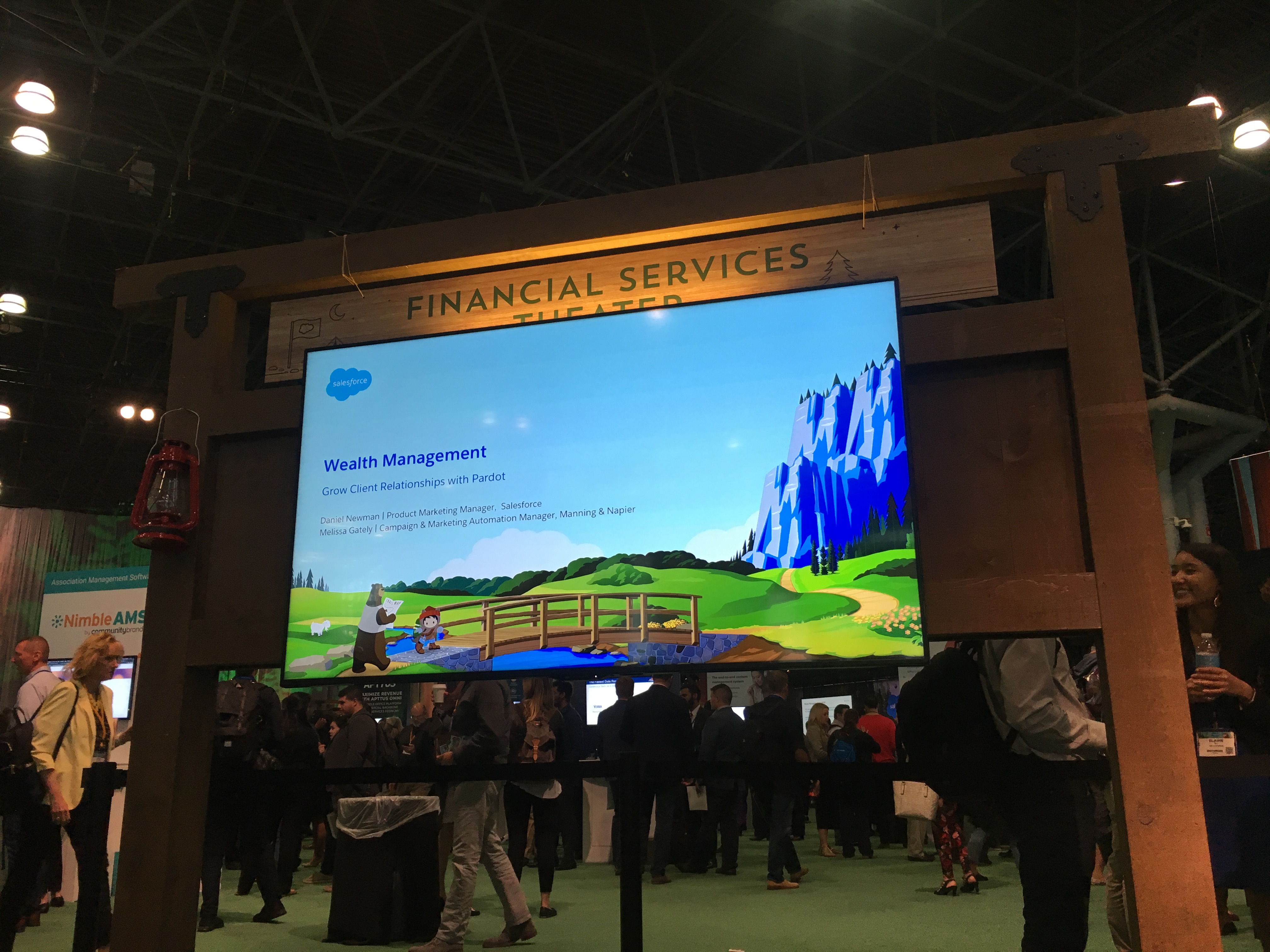
The third session was definitely our favorite. The main idea? Consumers are hungry for personalized, eye-catching, and data-driven connections, but many businesses are struggling to keep up.
The featured speaker was from a wealth management company. Their marketing department went from being a cost center to a well-oiled revenue-generating machine by using Pardot. In less than five years, not only were they able to deliver the above qualities to their consumers, they increased form completions by 535%, increased subscriber count by 135%, and were able to identify 14x more prospects.
They used an “Attract/Capture/Nurture” method, similar to the one we use at IMG:
- Attract – create a “shiny” publication
- Capture – direct them to a landing page to get their information
- Nurture – send follow-up emails and cross-promote services
They saw significant success and were able to prove ROI ten-fold. The presentation resonated with our group — our Pardot strategies and best practices had been validated.
Interested in incorporating these strategies in your own email marketing efforts? Contact us today!
Session #4 – Best Practices for Email Marketing
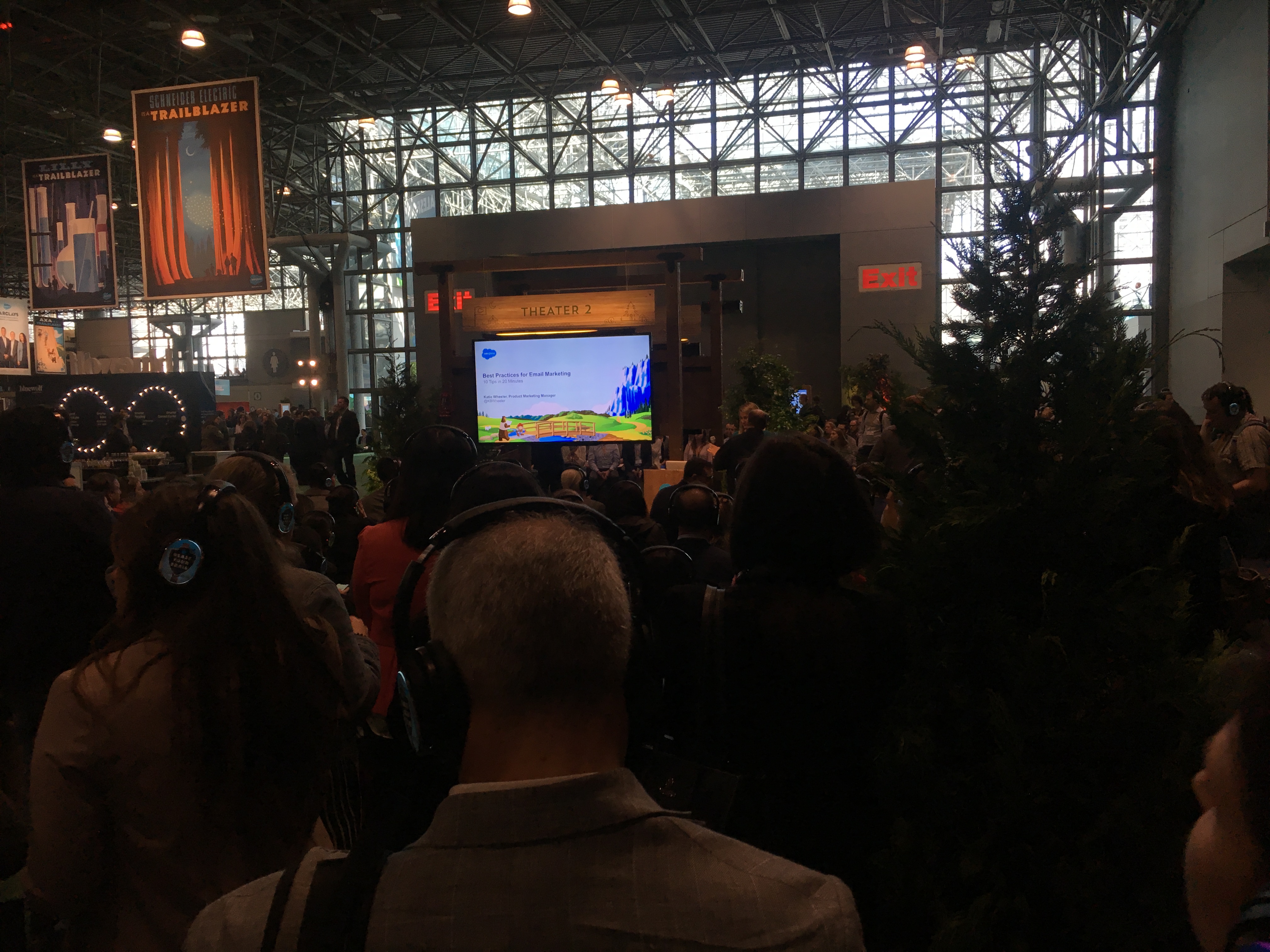
Since newsletter and drip email campaigns are some of our specialties, we wanted to make sure we were up-to-date on the latest best practices in email marketing.
The best practices listed were:
-
- Make the customer experience priority #1
- Be explicit about the opt-in process
- Exchange value for permission
- Make your emails relevant
- Understand the context in which your customer is opening your email
- Consider the subscriber experience in all elements of your email (including CTAs!)
- You usually only get one open/one click, so make it count!
- Make sure your emails are mobile optimized!
- Quality > quantity
- Remove unengaged subscribers and prioritize transactional messages
Some of these may seem intuitive, but it’s important to check back in on the basics to make sure you’re not missing any red flags within your email strategy.
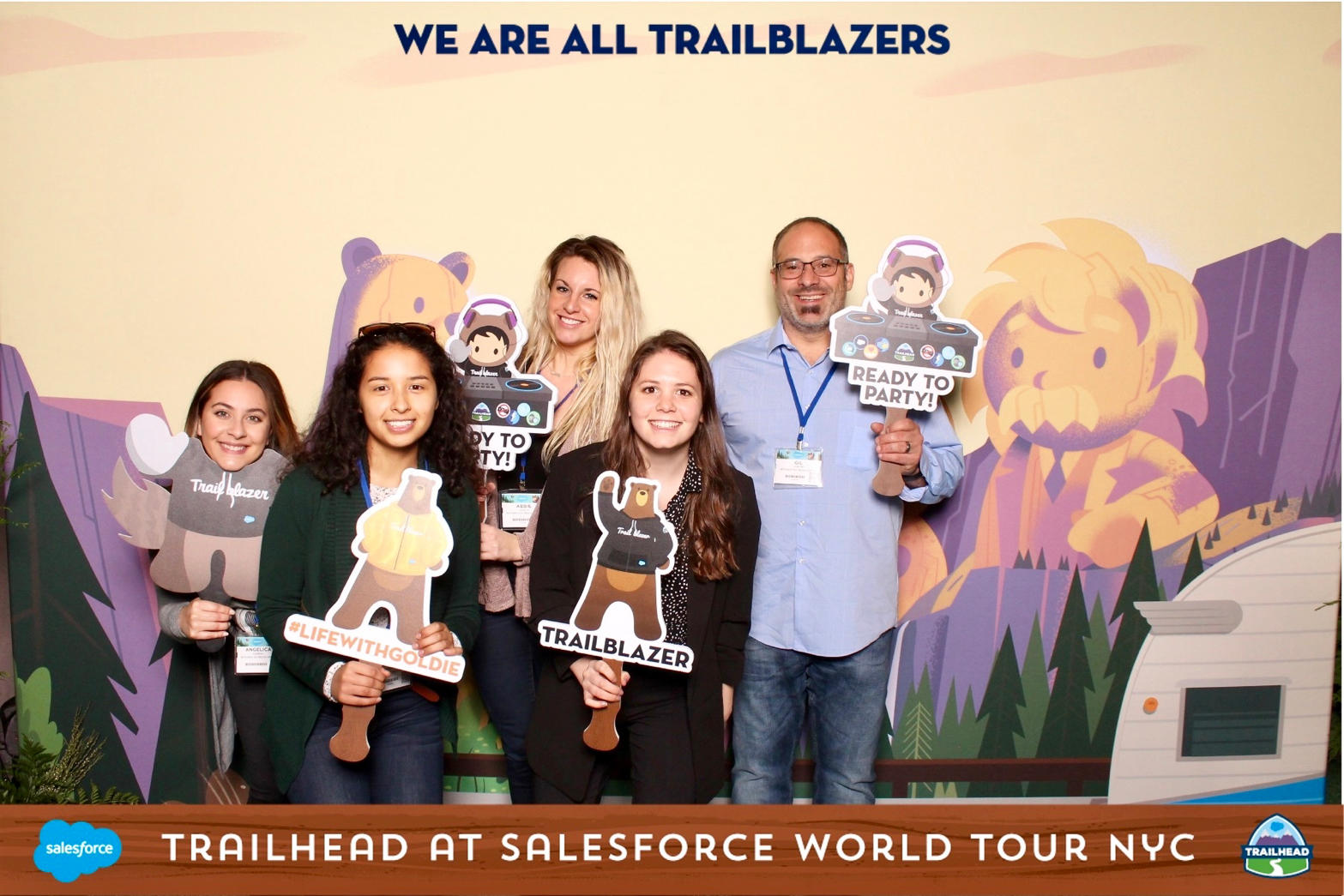
Overall, we had a blast at Salesforce World Tour NYC, and can’t wait to learn more about what Salesforce has in store for the rest of 2019 and 2020!
Read more about our must-have Salesforce tools for 2019. Some of them may surprise you!

